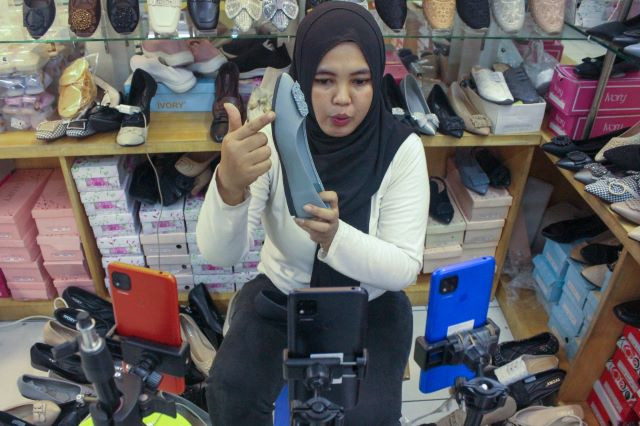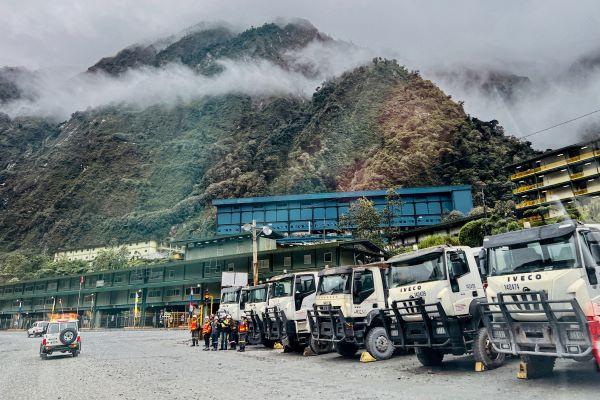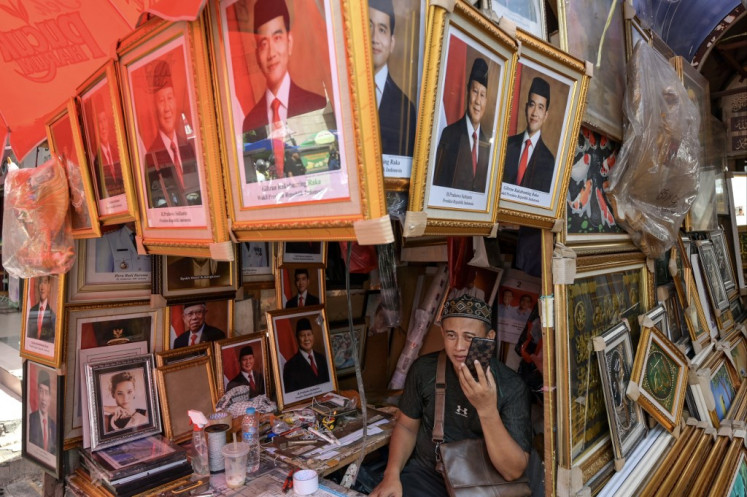Growing role of SMEs in ASEAN Economic Community
Change Size
 Prepare yourself: Students form 'MEA', the Indonesian translation of AEC (ASEAN Economic Community), on the courtyard of Polytechnic University of Surabaya, on Dec. 18. (Antara/-)
Prepare yourself: Students form 'MEA', the Indonesian translation of AEC (ASEAN Economic Community), on the courtyard of Polytechnic University of Surabaya, on Dec. 18. (Antara/-)
A
SEAN is a diverse and economically dynamic grouping of 10 Southeast Asian countries, collectively accounting for the world’s third largest consumer base and a 3.2 percent share of the world’s gross domestic product (GDP).
That proportion is set to rise in the coming years, as “catch-up” growth sees emerging ASEAN countries close the gap on the major European economies by 2030. Small and medium enterprise (SME) development in ASEAN is a key strategy, focusing on supporting SME access to finance, markets and global opportunities, human resources development, information and advisory services, technology and innovation.
The contribution of SMEs to economic growth, employment and development in the region plays an important part in achieving equitable economic development and regional economic integration.
Below is the comparison of the three ASEAN countries on economic strengths, the banking penetration of micro, small and medium enterprises (MSME) and the opportunities and challenges faced by the MSMEs.
Indonesia is the largest economy in Southeast ASEAN with GDP nominal at US$888 billion and GDP per capita at $3,500.
Indonesia’s banking sector is characterized by a growing economy. About 76 percent of assets of the financial sector are in the banking sector.
It has low banking penetration with a loan to gross domestic product ratio of 26 percent with only 41 percent of Indonesians having their own bank accounts. About 32 percent of the population don’t save.
The informal sector plays a significant role in serving Indonesians on the lending side where only 17 percent of Indonesians borrow from the banks, 43 percent borrow from the informal institutions and 40 percent of them don’t borrow at all. MSMEs play a crucial role in Indonesia’s economy.
There are about 52 million in Indonesia and they represent 99.9 percent of all business units, employ 97.7 percent of total labor force and contribute 57.8 percent of GDP.
However, even though MSMEs are the backbone of Indonesia’s economy, they get only small portions of bank financing. Total loans to MSMEs are worth about $57 billion, just about 20 percent of total bank loans with a growth rate of about 15 percent per year.
Since the micro segment can employ a lot of people and produce cheap products, it is a main contributor to national GDP and is widespread around the country.
Several advantages to developing micro-segment enterprises are their strategic value in the economic growth of national schemes and widespread economic distribution.
Meanwhile, the economy of Malaysiaw, the 44th most populous country in the world with more than 30 million people, is the third largest in ASEAN behind Indonesia and Thailand with a nominal GDP of about $375.6 billion and GDP per capita at about $12,000.
Based on the Economic Census 2011, the total number of SMEs in Malaysia is 645,136. They employ about 65 percent of the total labor force with 3.67 million workers, make up 97.3 percent of all business units and contribute 35.9 percent of GDP.
SMEs can seek financing from various types of financial institutions, including banking institutions, development financial institutions (DFIs), leasing and factoring companies and venture capital companies that provide equity financing. In addition, SMEs can also make use of various specific-purpose special funds set up by the government to help SMEs.
The banking system loans to SMEs accounted for 42.6 percent of total business loans outstanding by the end of 2005. Most SMEs used their own internally generated funds and funds sourced from friends and family members to finance their operations. Only 16 percent of SME respondents indicated a reliance on financing from financial institutions.
Indeed, only 10 percent of micro enterprises indicated that they relied on financial institutions for financing. A lack of collateral was the main obstacle faced by SMEs when seeking financing from banking institutions.
This was followed by insufficient loan documentation and the lack of a financial track record, as well as business viability. Almost 10 percent of respondents indicated a long processing time was also a problem.
Singapore is a global commerce, finance and transport hub. The Singaporean economy is known as one of the freest, most innovative, most competitive, most dynamic and most business-friendly.
Singapore’s financial system remains sound, but industry must stand vigilant against rising risks. SMEs and firms with US dollar loans could be more vulnerable under stress scenarios.
Banks reported higher NPL ratios under stress scenarios for loans to SMEs compared to large corporations. As loans to large corporations form the bulk of banks’ corporate loan books, the higher stressed NPL ratios for SME loans would not severely impact banks’ overall asset quality.
However, SMEs’ access to funding could be affected should banks become more risk averse in their credit underwriting for SME loans.
We need to promote more financial inclusion to deliver financial products and services to a wider community that is under-served, including MSMEs.
According to the AEC Blue Print, there are four initiatives that can improve SME capacity to participate effectively and proactively in regional and global value chains.
First, enhance the financing ecosystem in the region to benefit MSMEs, including through cross-collaboration among various working groups in ASEAN.
Initiatives to be explored may include setting up credit bureaus to facilitate the MSMEs in establishing credit standing to improve access to financing, credit guarantee institutions to provide credit enhancement to MSMEs that do not have collateral and other appropriate facilities or mechanisms that will provide financial access for MSMEs.
Second, expand the scope of financial access and literacy, as well as intermediary and distribution facilities, such as digital payment services to promote cost-reducing technologies and the development of financial services for smaller firms and lower income groups.
Enhance discussion channels in ASEAN to develop best practices and exchange information as well as strengthen cooperation.
Third, intensify the implementation of financial education programs and consumer protection mechanisms to bolster financial management capacity and encourage use of financial services.
Fourth, promote the expansion of distribution channels that improve access to and reduce the cost of financial services, including mobile technology and microinsurance.
___________________________________
The author is the vice president of the Shariah & MSME Academy – CIMB Niaga Indonesia. The views
expressed are his own.









